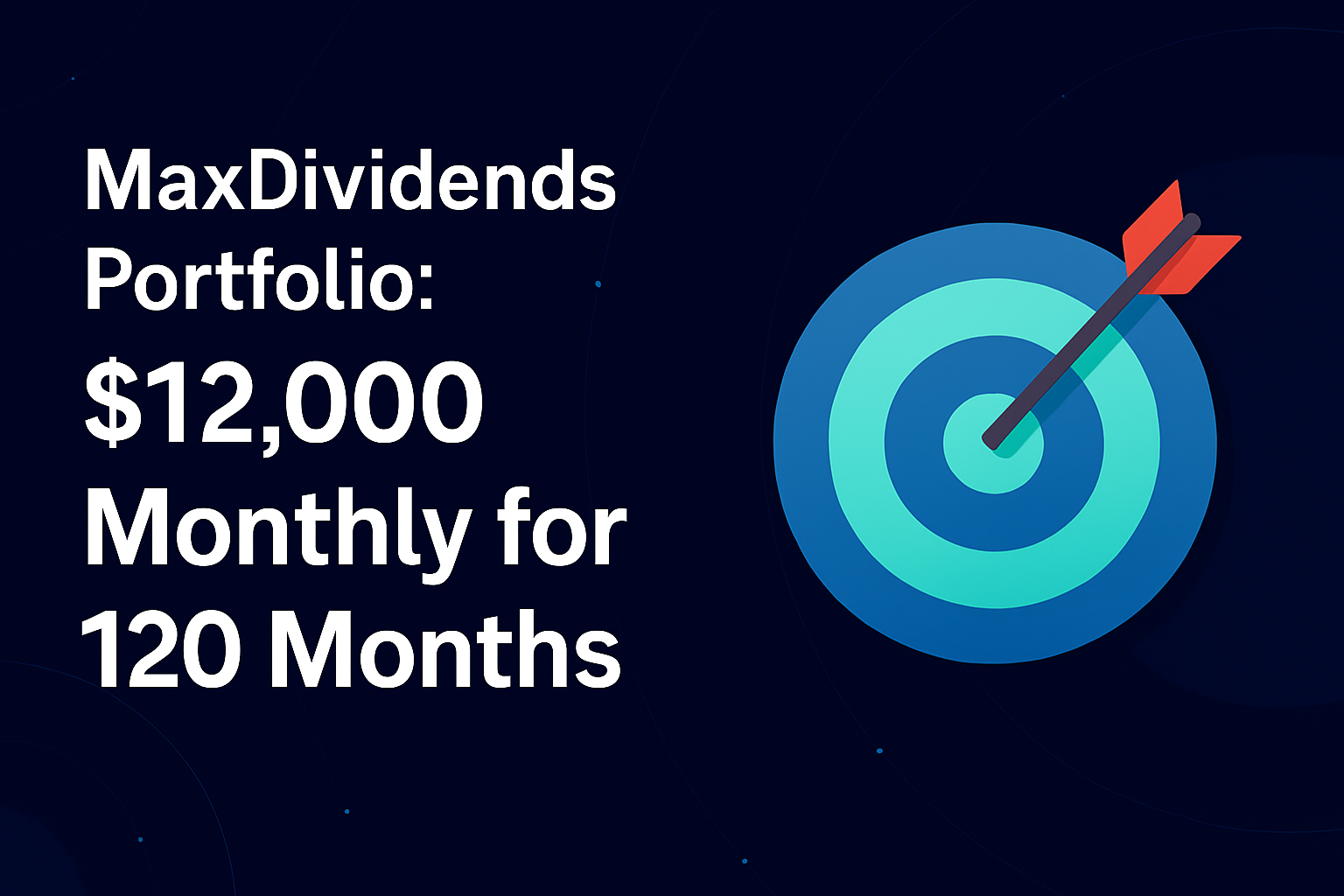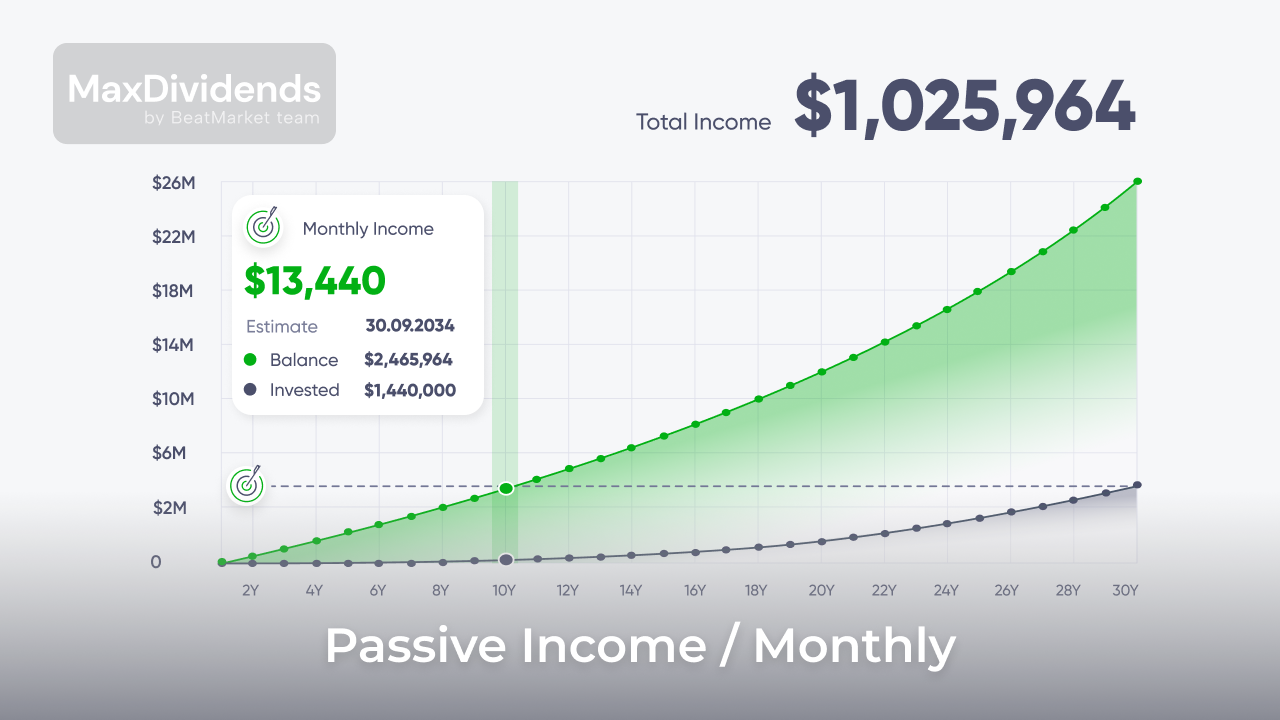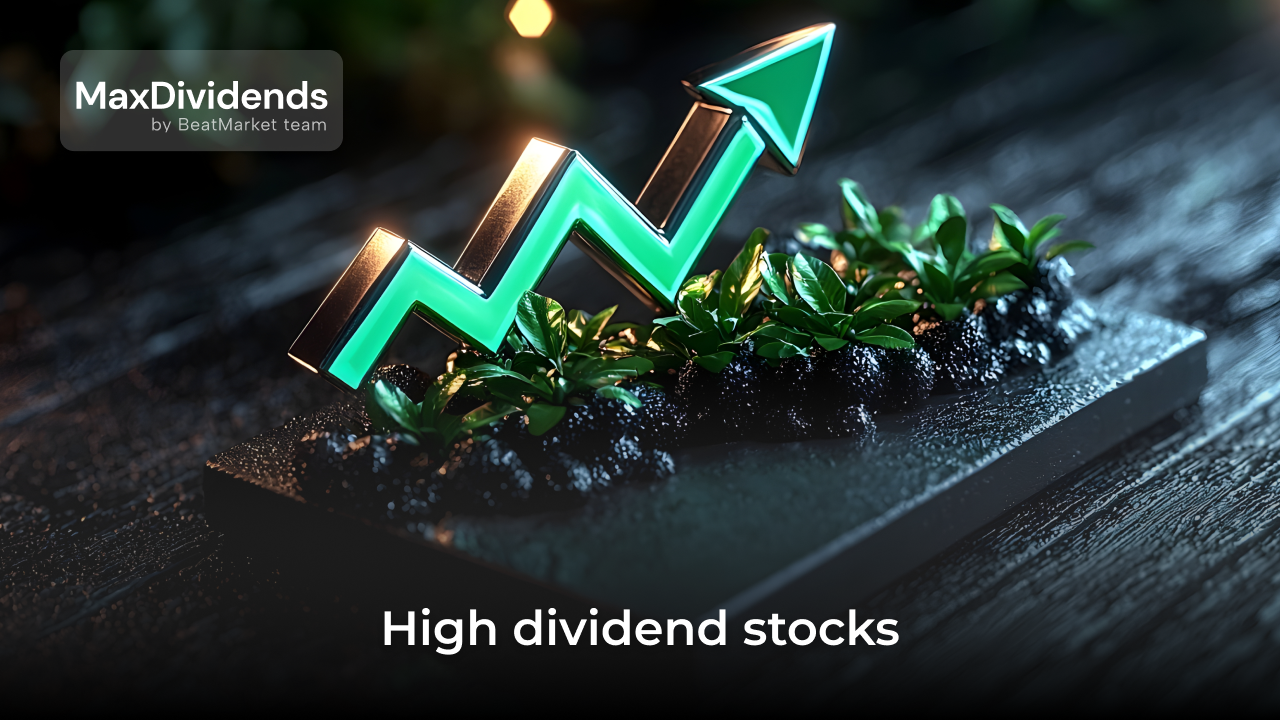Investing always involves risk. So the higher it is, the higher is the potential return on the asset. To express the risk in a numerical form, the beta ratio is used. It is calculated with the help of statistical analysis methods and illustrates the volatility of any particular instrument relative to the parameter chosen as a benchmark.
Including the best high beta stocks in your portfolio is considered to be an effective way to increase your investment returns. Both long-term investors and traders include this ratio in their strategies.
Table of Contents
What is beta in the stock market?
Beta is a statistical ratio that measures the volatility of a stock price relative to a broader market index. For the U.S., beta stocks are usually calculated relative to the S&P 500.
This ratio is used in the Capital Asset Pricing Model (CAPM). It describes how expected returns are related to systematic risk. The asset most often assumed is a stock.
The beta is calculated based on historical data. There is no guarantee that stock prices will behave as they did in the future. Yet, in investment theory, it is an important tool that helps shareholders build a diversified portfolio.
If beta stocks are less than the 1.0 level, it means that the volatility of that security’s price is lower than that of the broad index. It is suitable for shareholders with a conservative strategy. A low beta shows that in times of crisis, the asset’s price falls less than the broader market.
For example, a beta of 0.7 means that, on average, when the market rises/declines by 10%, the stock price rises/declines by 7%.
A beta stock ratio above 1.0 means that the security’s price has shown higher volatility than the broader market, such as the NASDAQ or S&P500 indices, in the previous time periods. This means that the company’s shareholders can get a return higher than the average. But it is a risky asset; in the event of a crisis, losses will be higher.
How to Calculate High Beta Stocks?
The formula used to calculate the beta ratio may be presented in two forms.
The Beta stocks are calculated by dividing the covariance of the security and the index by the variance of the index. The second formula is in fact a modification of the first one, which helps shareholders better understand the meaning of the ratio.
The following indicators are used in calculating the standard formula:
- stock return is the change in the security price, for which the stock’s beta is calculated, over a certain period of time (as a percentage);
- market return is the change in the underlying index over the same period of time (also as a percentage);
- covariance is a statistical indicator, a measure of dispersion, reflecting the total deviation of 2 values from expected ones;
- dispersion is another statistical concept, a measure of dispersion relative to the overall mean.
To calculate the beta yourself, shareholders need to follow these steps:
- Get past data on a stock’s price change. This can usually be downloaded from the website of the exchange that trades the chosen security. For example, take each day’s closing price for at least a year.
- Find information on the index dynamics, which will be taken as the base, for the same period.
- Calculate the variance and covariance.
- Substitute these values into the formula to calculate the beta stocks.
The calculation is simplified by using Excel. One can use the function =NEXT to find the beta values. It takes an array of stock and index returns as inputs. For example, if market close results are obtained for each day, the return is calculated as the daily price increment also using the Excel formula.
Calculating this indicator on your own is quite complicated and time-consuming. Therefore, it is sometimes advisable to use ready-made data, which are listed on various services for shareholders, called screeners.
Additional aspects of the variables used in calculating “stipulated beta”
The data on the beta stocks given on different websites may differ. This is because the calculations are done:
- for different periods;
- in different increments;
- based on different benchmark indices.
For example, for the US market, the most popular option is to calculate beta based on the S&P 500. But the DJIA and NASDAQ indices can also be used.
There is also no consensus on which period to calculate the beta ratio. It largely depends on what strategy the shareholder is pursuing. A long-term investor will care about several years of data.
For those who trade intraday, they are virtually useless. In this case, it is advisable to use personally calculated ratios. With this approach, the trader will know exactly which period is taken as a base.
In addition, it allows you to use less popular options as a base. For example, some long-term investors find it useful to consider the beta stock in relation to a precious metals index.
What Is A Good Beta Ratio For A Stock?
There is no such thing as a good stock beta ratio. The value of this ratio should be correlated with the risk tolerance of the potential shareholder and the challenges he or she faces.
For example, a conservative strategy favors low beta stocks. An aggressive strategy favors highly volatile assets with a beta greater than 1.
Is A Higher Beta Better For Stocks?
High beta stocks tend to be more volatile than the broad market. For the investor, this means the following:
- an investment in such a company has the potential to yield a greater return to the shareholder than buying the fund’s securities on the broad market;
- investing in high beta stocks can result in more money being lost.
High beta stocks are more sensitive to market fluctuations. The payoff for returns in bull market periods will be a fall in times of crisis.
Such securities can be good if a shareholder:
- builds a diversified portfolio with an investment horizon of decades;
- seeks highly volatile assets for intraday trading;
- wants to increase returns by expecting a prolonged bull market trend.
Based on the value of the beta stocks ratio, it can be concluded whether the security of interest fits the risk profile and the chosen strategy.
Yet it cannot be stated as high beta stocks meaning that an investment in an asset is guaranteed to generate a return. Nor can it be the only evaluation criterion. Fundamental factors, key multiples, company’s prospects, etc. should be taken into account.
Examples Of High Beta Stocks in 2023
The following screenshot represents the top 10 high beta stocks according to tradingview.com as of mid-2023. All of these securities can be found on US exchanges.
The service names CBL International Limited, a Cayman Islands-registered logistics company, as leading the way. The issuer has a market capitalization of $66.725 million and beta stocks of 17.66.
The second place is occupied by energy transportation company Toro Corp with a capitalisation of about $36m.
Almost all of the issuers on the list are micro- or even nano-capitalized companies. The exception is Carvana Co. It is an online marketplace for buying and selling second-hand cars. The issuer has a capitalisation of $4.9 billion, thus classifying it as a mid-cap company.
As for the group of large-cap issuers, the leader, according to tradingview.com, is Unity Software Inc ($16.4 billion) with the beta ratio of 3.26.
How Does Beta Measure Risk?
Shareholders generally regard the beta ratio as a measure of risk. It shows how the volatility of a single stock relates to the volatility of the broader market. The higher the beta, the higher the risk of investing in that stock.
High beta stocks in NSE
Below is a list of high beta stocks traded on India’s NSE. Data provided by investing.com.
| Name | Market | P/E Ratio | Revenue | Average | EPS | Beta |
| Orchid Pharma | 25.76B | 32.01 | 6.66B | 14.76K | 11.35 | 2.70 |
| Birla Tyres | 627.40M | -0.12 | 12.33B | 200.66K | -34.17 | 2.57 |
| Flexi Tuff | 922.32M | -0.61 | 9.15B | 18.91K | -48.05 | 2.57 |
| Biofil Chemicals | 726.63M | 155.10 | 300.36M | 22.28K | 0.29 | 2.54 |
| Shrenik | 612.00M | 262.50 | 485.56M | 1.48M | 0.00 | 2.14 |
| Setubandhan Infrastructure | 100.54M | 9.21 | 248.60M | 117.57K | 0.01 | 2.08 |
| Borosil Renewables | 65.78B | 99.07 | 8.94B | 401.71K | 5.34 | 2.07 |
| FCS Software Solutions Ltd | 3.68B | 263.50 | 349.14M | 3.81M | 0.01 | 2.06 |
| Kamdhenu Ventures | 8.58B | 20.57 | 7.94M | 604.43K | 15.23 | 1.94 |
| Kamdhenu | 8.67B | 20.38 | 1.91B | 219.62K | 11.68 | 1.91 |
High-beta stocks are usually issued by high-risk companies
The lists of stocks with high beta ratios very rarely include companies with mega-capitalisations.
That is because the smaller the company, the lower its sustainability. Small businesses are much more reliant on cheap credit than large corporations. Therefore, in case of recession, rising interest rates and other unfavorable scenarios, financial performance deteriorates dramatically. This is also reflected in quotations.
But such companies have higher growth potential. Thus, in periods of economic recovery, shareholders expect them to increase profits rapidly.
Among the market leaders, one can also find companies with a beta of more than 1. For example, Apple with its $3 trillion market value has a beta of 1.29 (according to investing.com). Investing in such stocks is one way to find the sweet spot between risk and return.
If it is a mega-capitalised company, high beta stocks meaning that the business remains sensitive to the level of solvent demand. Such businesses tend to be in the high-tech rather than defensive sectors.
Beta can also be negative!
The beta ratio can be negative. This means that the stock is more likely to move in the opposite direction to the index. When the broad market falls, such a security will appreciate in value. This is most often the case with companies that shareholders categorize as defensive sectors.
The modulus of the ratio will indicate how volatile a stock price is. For example, a negative beta of -0.5 means that if the benchmark index falls by 10%, the stock will appreciate by 5%. A beta of -2.5 means that if the index falls by 10%, the stock price will rise by 25%.
Advantages of investing in high beta stocks
Investing in high beta stocks provides 3 benefits:
- High returns during periods of market growth.
- Outpacing inflation.
- Rapid capital appreciation.
By adding high beta stocks to your portfolio during periods of rising stock market volatility, investment returns can be significantly increased. Such stocks, unlike low volatility stocks, can not only protect a shareholder’s money from inflation but also provide net capital appreciation.
Demerits of high beta stocks
A high beta ratio indicates the high volatility and risk associated with investing in this stock. However, it gives no guarantee of profitability.
First of all, this is because companies with high beta are unstable. There is never any guarantee of their business model being successful and lasting for decades.
Therefore, investments in such assets cannot be passive. Such securities require the shareholder’s constant attention, analysis of the company’s prospects and market expectations.
Investing money in such securities without a proper understanding of the issuer can lead to large losses.
Limitations and Risks of High-Beta Stocks
It is not possible to assess a stock using only one criterion (the beta ratio) due to the fact that it no longer indicates:
- the company’s growth potential;
- the “fair” value of the stock;
- the price direction we can expect in the near future;
- news likely to affect the stock price.
There are programmes designed to measure changes in beta over time. It is believed that they can help shareholders to account for some of the variables.
Have other associated risks
Investing in high beta stocks has other risks. Such a company may be characterized by poor management and an unsustainable business model. This is what makes its price volatile.
If an investor uses only one evaluation criterion, supposing that high volatility equals high returns, he or she runs the risk of missing out on negative factors.
Reliance on past data
Beta is calculated solely on the basis of past data. There is no guarantee that high beta stocks will continue to outperform the broad market in the future.
Past performance does not take into account current market conditions or recent management decisions. For example, a company with low beta, but its management decides to expand sharply through heavy borrowing.
Such a business runs a higher risk of bankruptcy if profits decline. But this is unlikely to affect the beta ratio immediately.
Investing in High-Beta Stocks
Investing in high beta stocks has two features:
- they appear to be useful only in a bull market;
- separately, each is a high-risk security, even in periods of strong stock market growth.
Therefore, if an investor chooses to invest in high beta stocks in the hope of maximizing portfolio returns, they should pay maximum attention to diversification.
However, investment in ETFs, rather than buying individual high beta stocks, is one way to do this. This reduces risk and is more suited to a long-term strategy.
Information on 3 popular exchange-traded funds that invest in high beta stocks can be found below.
| Ticker | Fund Name | Issuer | AUM | Expense Ratio | 3-Mo TR | Segment |
| SPHB | Invesco S&P 500 High Beta ETF | Invesco | $575.54M | 0.25% | 12.39% | Equity: U.S. – Large Cap |
| HIBL | Direxion Daily S&P 500 High Beta Bull 3X Shares | Direxion | $72.01M | 0.99% | 33.70% | Leveraged Equity: U.S. – Large Cap |
| HIBS | Direxion Daily S&P 500 High Beta Bear 3X Shares | Direxion | $55.60M | 1.07% | -31.31% | Inverse Equity: U.S. – Large Cap |
They all use the S&P 500® High Beta Index as their basis. Their net worth is a set of stocks of 100 companies that:
- are part of the S&P 500 index;
- have shown the highest beta over the past 12 months.
We can reduce total portfolio drawdown during stock market crises by adding low beta (less than 1) or even negative beta stocks.
Furthermore, a common recommendation is to buy high beta stocks at the start of a crisis recovery and get rid of them at the peak of a bull market.
What Does a High Beta Tell Investors?
A high beta is a sign that the share price is moving faster than the broad market. That is, it makes large profits during periods of growth, but falls faster and more sharply in times of correction.
Why Invest in High Beta Stocks?
The main purpose of high beta stock investing is to make a quick profit on price fluctuations. This requires “buy low and sell high”. So the potential shareholder should pay attention both to the beta ratio and to many other factors.
Trading high beta stocks is often recommended as part of short-term strategies. They can generate good returns even with little leverage and in a short period of time. However, whether an investor makes a profit or a loss depends largely on his or her stock picking skills.
How to Use Beta for Diversification
Diversification is not just about investing in different asset classes. It also requires allocating capital within a single class. Given the magnitude of the beta and the risks of each particular stock, a diverse set of securities can be obtained.
For example, an investor can allocate a part of his equity allocation to companies with a beta between 0 and 1 in order to form a stable part of the portfolio. The rest can be invested in high beta stocks (above 1) in order to increase returns.
Negative betas can be used to reduce the overall risk of the portfolio. The total beta of the portfolio is calculated using the formula below.
Conclusion: Some Final Thoughts on Beta
The beta ratio is one of the most important indicators for determining the stock’s volatility and the risks of investing in it.
The concept of beta is used by both fundamentalists and long-term strategists, as well as intraday traders. By taking into account the beta value, a shareholder can diversify his portfolio and reduce its overall risk.
Note, however, that only past data is taken into account when calculating the ratio. A high beta stock meaning that the stock has risen sharply or fallen in value in the past. It gives no guarantee that the next phase of the company’s value increase will begin in the near future. Therefore, investment decisions cannot be based on this indicator alone.
Besides, buying a high beta stock (much higher than 1) actually means investing in small-cap companies. This approach to investing carries higher risks and requires active shareholder participation and portfolio monitoring.
FAQ
What is a high beta in stocks?
High is considered to be any beta exceeding 1. This means that its quotations are moving faster than overall stock market performance.
What are examples of high betas?
The top 10 stocks with the highest beta are usually those with 2.5 or more. It can even be in the double digits.
Which company has highest beta?
The high beta value varies all the time and is highly dependent on the calculation period a particular screener is using. Therefore, different investor websites will cite different companies as leaders in terms of beta value.
When it comes to the S&P500 index, among the most volatile (having a high beta) are companies such as Carnival Corp, Nvidia Corp, Tesla, Inc, etc.
What is a good beta?
A good beta ratio is one that is consistent with a potential shareholder’s investment strategy. There is no single number to guide all market participants. Low beta stocks are good for conservative strategies and high beta stocks are suitable for aggressive strategies.






